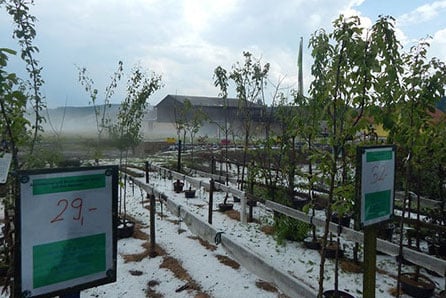The damage has been estimated at around €2 million, and affected more than 13,000 hectares of arable crops, vineyards, vegetables and grassland.
In Lower Austria the districts of Zwettl, Amstetten, Scheibbs, Neunkirchen, Hollabrunn and Horn were hit hardest with fields of grain, corn, and potatoes destroyed – worth a total of €800,000.
In Murau and Murtal in Styria cereal and corn crops were affected – worth an estimated €400,000. In Burgenland, the hail was especially bad in the district of Neusiedl am See – incurring around €800,000 worth of damages.
One woman was injured during a thunderstorm in Amstetten, Lower Austria, on Sunday evening. She was hit on the head by large hailstones whilst standing on a sports field and had to be taken to hospital.
1,500 homes in Reisseck, Carinthia were without electricity on Sunday night after an electricity transformer was hit by lightning and set on fire. No one was injured.
The bad weather caused several interruptions to the Nova Rock music festival in Burgenland on Sunday, with the crowds asked to seek shelter during thunderstorms.




 Please whitelist us to continue reading.
Please whitelist us to continue reading.
Member comments